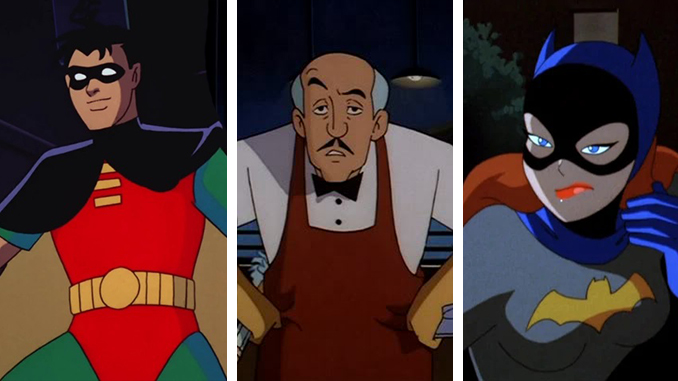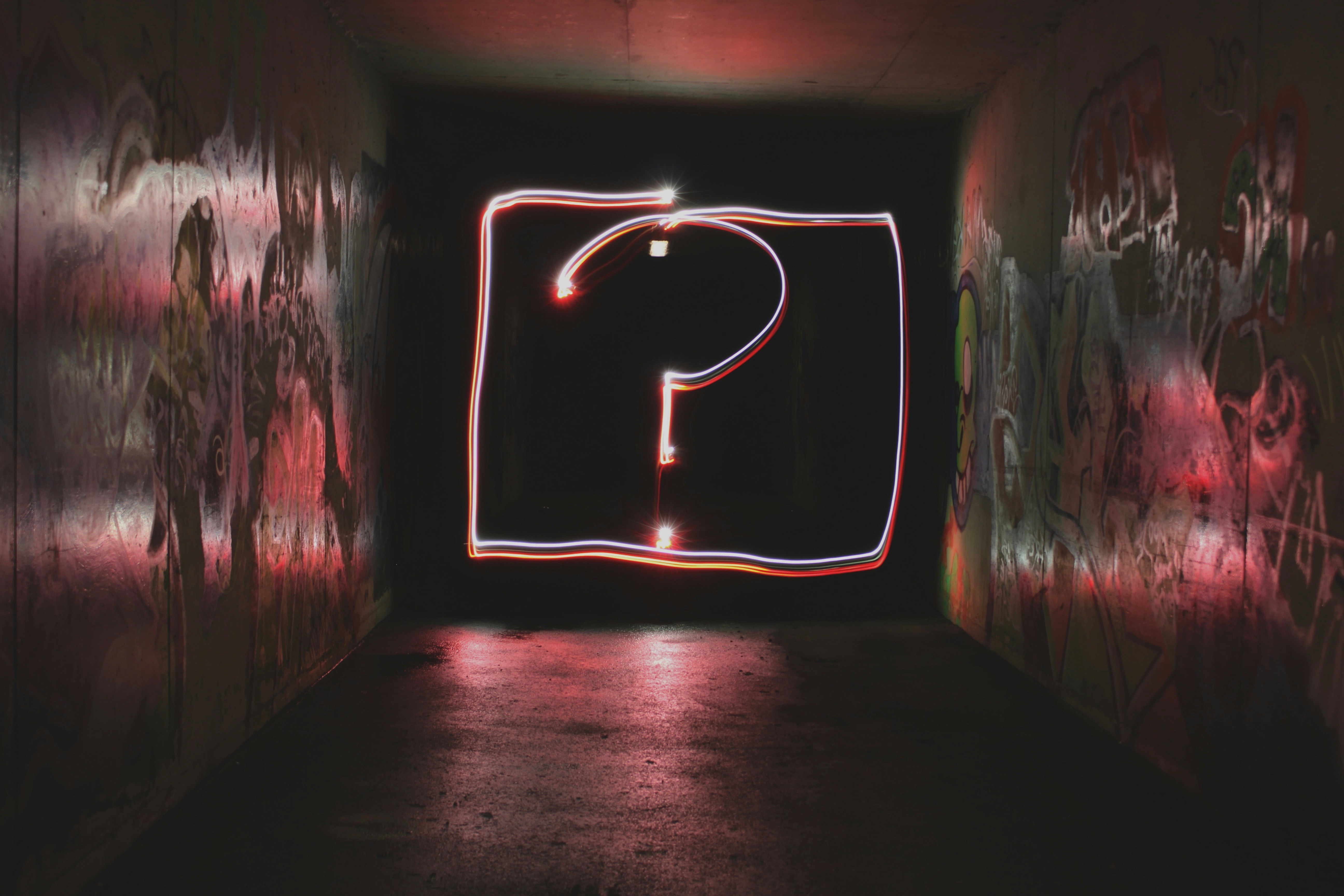
Editor’s Note: This year, the iconic Batman: The Animated Series turns 30 years old. “Return to Gotham” is a new monthly column looking back at the cartoon that remains a touchstone of the superhero genre and one of the most iconic portrayals of The Dark Knight.
Beyond all the other reasons Batman: The Animated Series is notable, it stands out for being the series that kicked off one of the character’s longest adaptations outside of the comics. Serialized stories that long often lose the thread, forgetting what it is that makes their central characters compelling. In light of that, B:TAS is notable for something else: It has one of the most cohesive narrative throughlines. From the very earliest episodes of B:TAS to the very last scene in which we see Bruce Wayne, the key to understanding it has less to do with Batman than it does his sidekicks and supporting characters, whose portrayals in The Animated Series are among the most iconic ever.
“For the most part, we played Batman and Robin traditionally, like they were chums. This is the first episode where we had Robin backtalk Batman.”
—Eric Radomski on the commentary track to “Robin’s Reckoning: Part 1”
The two-parter “Robin’s Reckoning,” which aired after several other adventures featuring Loren Lester’s whip-smart, college-age take on Dick Grayson, begins with the Dynamic Duo scoping out an attempted sabotage of a construction site by some penny-ante racketeers. The two thrash them into submission without much trouble, but one of them sings out the name of the guy behind the job, and something about that name makes Batman send his young protege away without any explanation. But as Robin says, he’s been trained by the best. It isn’t any surprise when he and Alfred figure out that the crook behind the sabotage is actually Tony Zucco, the very same guy wanted for the murder of Dick Grayson’s parents.
Robin is hot to avenge his family, but Batman isn’t having it, shutting his young partner down. The episode flashes back to the boy’s past, and we are treated to Robin’s origin story. The two-parter is one of the best episodes of the show for a lot of reasons: Lavish animation (even by the show’s standards), incredible voice performances, and the most visceral and down-to-earth action sequences. Batman snarls his way through fistfights and car chases with villains whose superpowers are just sharp suits and blazing typewriters, and you can see how much he fucking hates these guys. But it’s also a standout for putting the Dark Knight and his partner’s parallels center stage, for really rationalizing why these two fight crime side by side.
Dick: If only I could’ve stopped him!
Bruce: I know. You keep thinking, “If only I’d done something differently…” But there isn’t anything you could’ve done. There isn’t anything either of us could’ve done.
Neither The Animated Series nor any of its successive in-universe shows ever once depict the precise moment when Bruce Wayne is orphaned. It is alluded to and referenced a few times, and in one episode we even see a bewitched Batman fantasize about stopping the crime that ended the lives of Thomas and Martha Wayne. It is clear that the moment is so awful to him that we are simply not privy to it. Besides, we all know how Batman became Batman.
Perhaps the closest the show has ever come to the moment thematically is in “Robin’s Reckoning.” Just as we never see the gunshots or the fallen string of pearls, we also don’t explicitly see the moment the Flying Graysons plunge to their deaths during their trapeze act, victims of sabotage by the racketeering Zucco (Tom Wilson, who in this sole appearance manages the incredible feat of being one of the show’s most contemptible villains).
The show has more than its fair share of disturbing scenes, but this one is an altogether different kind of dreadful. Shirley Walker’s orchestral score is at its most ominous. The series chose to go with a child actor (Joey Simmrin) to portray the 10-year-old Dick Grayson, giving an understated and naturalistic performance. We see the shadows of Dick’s parents against the spotlight as they leap onto the fateful trapeze, the score goes entirely silent for a sickening beat, and then thunders as a single severed rope waves into frame, to the horrified gasps of the audience.
Zucco slips out of Batman’s grasp in the past, but in the present, Batman and Robin both track him down separately, and their manhunt ends on the end of a pier with Robin about to do the one thing he’ll never be able to take back. After he doesn’t (this is a children’s show), and Zucco gets shoved into the back of the paddywagon, Robin acknowledges that Batman was right to pull him off the case before he let vengeance take hold of him. No, Batman says, a hitch in his voice: It was just the unbearable thought that Robin might die at the hands of the very man who murdered his family.
Meanwhile, The Animated Series simultaneously has a great portrayal of Batgirl and the dubious distinction of really, really mistreating the character. For some reason, the series creators decided to have Barbara Gordon and Bruce Wayne become romantic partners in continuity beyond the show—many of the same creators doubled down on this in the not-very-good animated adaptation of The Killing Joke. Considering Barbara dates Dick Grayson in the show, it is gross, and I don’t wanna talk about it here. It’s all the more disappointing because the show features a great origin for Batgirl in the two-parter “Shadow of the Bat.”
Barbara (portrayed by Melissa Gilbert in the earlier episodes before Tara Strong took over) was already established as a capable character: She sneaks into an evil robotic facility with all the cool precision of Solid Snake in the episode “Heart of Steel.” When her father, Commissioner Gordon, is framed up for bribery, she impersonates Batman to rally public support for him—but in the process resolves to forge her own bat-identity.
The episode sees Batgirl eventually team up with the initially reticent Dynamic Duo, as all three discover that Gordon is being framed by the same syndicate that is putting pressure on local mob outfits: Two-Face. (As usual, the nods to canon make perfect sense: Two-Face, who was once the District Attorney, positioned his weaselly informant within the police department before his disfiguring accident. Two-Face tips off his inside man to the whereabouts of criminals like Rupert Thorne, against whom Two-Face holds a grudge. His inside man gets the credit for cleaning up the city, and Two-Face gets to be top dog of the Gotham underworld. This delicious noir plot is resolved with a crate full of tommyguns, tons of explosions, and a giant coin.)
There’s plenty of campiness to be found here: It is plain hilarious that one bad guy who knows Barbara is shocked when he pulls off Batgirl’s mask to discover her identity when there is really no way you wouldn’t know her immediately. But, like Robin’s origin story, it’s still an episode that eschews too much fantastical superheroics in favor of grounded emotion and personal stakes.
Batgirl: It wasn’t like that! I volunteered!
Robin: You think you did! You don’t know him like I do. He manipulates, pulls strings. Anything to get what he wants.
Batgirl’s episodes aren’t always the show’s best, but the relationship between her, Robin, and Batman was the centerpiece of an episode that broke the status quo in its final season and clearly signaled the direction Batman’s story would take throughout the rest of the DC Animated Universe. “Old Wounds” is part of the show’s final season, when it was marketed as “The Adventures of Batman & Robin,” with a different art style, a few different voice actors (including Barbara’s), but notably the same continuity. It’s not as good as the earlier episodes, but stories like “Old Wounds” are why it’s worth checking out.
The final season introduced Tim Drake as Robin, a move that may have confused viewers in the first few episodes before it was revealed that Dick Grayson had moved on and become Nightwing (as he did in the comics). As “Old Wounds” opens, Drake’s Robin has some trouble fighting a few thugs. Nightwing intervenes, and the two have a heart-to-heart about what the heck happened to break up Batman and the original Robin.
The writing, we are told, was always on the wall. Throughout the show, we watch as Bruce becomes older and more worn down—you don’t need keen ears to notice that in the latest episodes, Bruce Wayne and Batman’s voices begin to sound the same, and that Wayne’s demeanor among mixed company is less cheerfully oblivious. Whether or not it was a conscious choice on the part of Conroy, it gives you the unmistakable impression that he’s a grimmer, less mannered person. It is this Batman we see in the flashback of “Old Wounds,” in which he brutalizes one of the Joker’s lookouts after a heist in which the Clown Prince of Crime gets away. It’s pretty clear to us that this guy was just in the wrong place at the wrong time and doesn’t really know anything, but Batman menaces the guy in full view of his traumatized wife and kid. Robin, whose evening of celebrating his college graduation and taking Barbara out to dinner has been callously interrupted, decides this is the last straw and peaces out.
Dick Grayson later hints at his turmoil to Barbara, but stops short of revealing his secret identity to her. When she goes to Wayne Manor to ask Bruce what’s wrong, he reveals that he is Batman and that he knows she’s Batgirl. (Alfred, upon seeing she has discovered the cave, makes a valiant but vain attempt to fess up to being Batman.) With the Joker holding the city to ransom and Robin nowhere to be found, Batgirl volunteers to help. Eventually, all three crimefighters converge on the Joker and punch him up.
But the damage to Batman and Robin’s relationship (and to Dick and Barbara’s) is already done. Robin throws down the mask for good, and as Batman tries to stop him from going, Robin punches him in the face. The two do reconcile after a fashion, but the show made it clear: Batman’s single-mindedness and obsession drive away the people closest to him.
Batman: You think you know everything about me, don’t you?
Alfred: I diapered your bottom. I bloody well ought to, sir.
Efrem Zimbalist, Jr. portrayed Alfred in all but one or two early episodes in The Animated Series and its many spinoffs and sequels, and it’s ultimately his character who understands both Bruce Wayne and Batman the most intimately. Zimbalist’s dry, bemused, unflappable Alfred Pennyworth delivers some of the show’s best lines, and the interplay between the two is often hilarious: I could write a feature just about him. We’ll visit the feature-length film Mask of the Phantasm in greater detail later, but Alfred’s role in it in particular resonates with the stories of Batman’s other supporting characters.
By the end of that movie, Batman has lost. He failed to stop the eerie avenger who has been bumping off mob bosses. He’s lost the love of his life, Andrea, the one who got away, the woman whose abandonment of him finally pushed Bruce Wayne into fully becoming the Batman. In the movie, Bruce has also pushed Alfred away, both in the flashbacks during which he agonizes over a life of love versus a life of costumed justice, and in the present when he growls at his butler’s suggestion that hey, maybe he should stop nearly getting himself killed and retire to be with a cute redhead voiced by Dana Delany.
In Bruce’s final scene, however, we see what he hasn’t lost, and it is Alfred who delivers the last word. The Phantasm was consumed by vengeance. But Batman—Bruce Wayne—has never been, Alfred says. He is tortured and alone. But when the Bat Signal lights up, he can still answer the call.
Bruce: You’re a stubborn piece of work, you know that?
Terry: Just like my old man.
This column is not about Batman Beyond or Justice League Unlimited, but it is impossible not to bring them up in this context, because the conclusion to this character occurs long after his original show ended. In the Justice League Unlimited episode “Epilogue,” we witness the very final scene in which Kevin Conroy’s Bruce Wayne appears in the chronology of the DC Animated Universe. It is more than 50 years after the events of B:TAS, set after even the far-future Batman Beyond, in which Wayne’s young protege Terry McGinnis (Will Friedle) assumes the mantle of Batman.
In that episode, we find that Bruce has, again, driven away those closest to him. Terry discovers a secret that calls into question everything he thinks he knows about his relationship with Bruce Wayne. (It’s way too complicated to go into here.) Bruce is by this point decrepit and bitter, his face craggy, his voice raspy and weak. He needs constant medication to stay alive. Those who grew up on the Animated Series had by that point watched him descend further and further into bitterness and loneliness across some dozen seasons of television.
How do you write a happy ending for a character whose entire purpose is to fight to his last breath in the absolute certainty that he’ll never see that fight to the end? It’s been done only rarely, but the same creators who brought this Batman to life saw him through to that ending. I’ve written about how B:TAS’ main storytelling mode is really tragedy: Look at the stories that center the villains, look at the feature film that leaves him in tears at the end. This has been the throughline of the show since nearly the very beginning: Batman is doomed to be alone.
That is why it’s a miracle that his very last scene, the moment where we draw the curtain on him, is one in which we see that he’s not alone. He has a son who cares for him, and for whom he cares. Despite all he’s lost, despite how that loss has clearly affected his ability to connect with other people across his whole life, we see that in his final moments, he’s loved. Even after Bruce Wayne is gone, Batman lives on through those heroes he’s inspired.
Tune in next month, as Return to Gotham examines puts the spotlight on the show’s most iconic character, the Clown Prince of Crime himself: Mark Hamill’s Joker.
Kenneth Lowe made you some soup, but it’s cold. You can follow him on Twitter and read more at his blog.
For all the latest TV news, reviews, lists and features, follow @Paste_TV.





























































